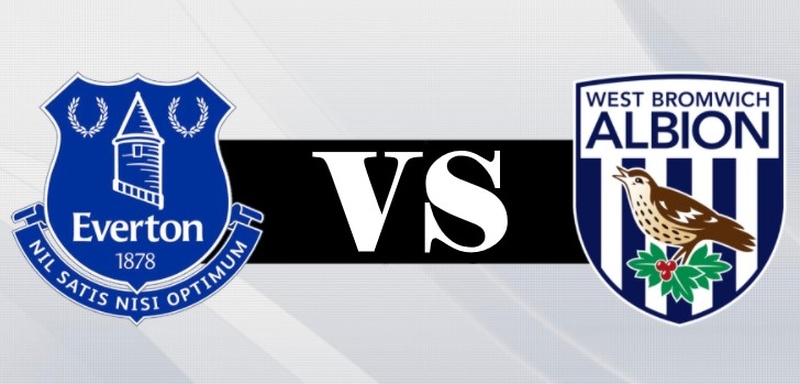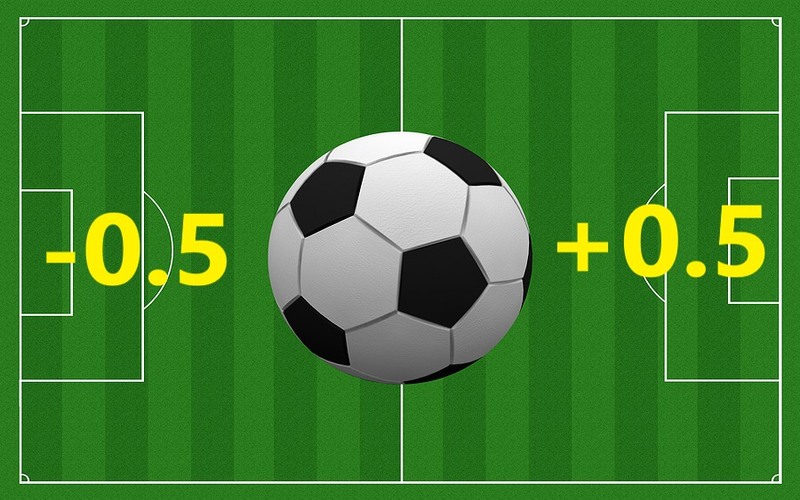 When it comes to betting on football there are so many markets to choose from that it can be overwhelming at times.
When it comes to betting on football there are so many markets to choose from that it can be overwhelming at times.
Many people stick to the markets they know or get caught up in the latest craze of the time, whether that is in-play betting, wagering on what will happen in the next five minutes of a game, huge accumulators or bet builders where you combine a dizzying array of markets such as the total number of corners, a specific player to score first, another player to be sent off and over 4.5 goals.
But sometimes older markets slip under the radar and are unknown to many punters, despite them being rather useful at times.
The double chance market is one such bet, so if you do not know what it is or want to know more about it, read on.
What Is Double Chance Betting?

Double chance betting is a market offered on all major games that is settled by the outcome of the game in 90 minutes, just like the standard match odds bet. However, whilst the “winner” or match odds market means you have to pick just one outcome, with double chance betting – as the name suggests – you can pick two outcomes.
As with match odds, you have three options to choose from but these are not just home, draw or away. Let us consider the game that took place on the 4th March 2021 between Everton and West Brom. Coming into the game the Toffees were pushing for a top-four spot whilst the Baggies were looking doomed to relegation, so Everton were strong favourites. The double chance option for the game is as follows.
- Everton-Draw
- West Brom-Draw
- West Brom-Everton
This market should be simple enough to understand and basically involves you betting on the result of the game but backing two of the three possible outcomes. Everton-Draw means that if either of those results occurs, you win: a WBA win is the only losing outcome. Likewise, a bet on West Brom-Draw only loses if Everton wins, whilst West Brom-Everton delivers the goods as long as the clash ends with a winner and is not a stalemate.
Odds For Double Chance Betting
The odds for double chance bets are lower than you would find in the match odds option. Whilst there are three alternatives to choose from in both markets, effectively, and unsurprisingly, the double chance bet gives you two bites of the cherry. Let us return to the WBA versus Everton game to indicate what sort of prices you can expect on this market.
Match Odds
With the Toffees some 26 points above their opponents, it is no surprise that they were the favourites. The most common prices for each of the three outcomes were:
- Everton to win – evens
- West Brom to win – 16/5
- Draw – 5/2
Corresponding Double Chance Odds
Whilst backing Everton just to win is available at evens, the two double chance options that include Everton are just 2/9 (with the draw) and 2/7 (with WBA). Equally, backing the Baggies to win is 16/5, but the two double chance options that include that outcome are 10/11 (draw) and (2/7) with an Everton win.
- Everton-Draw is 2/9
- West Brom-Draw is 10/11
- West Brom-Everton is 2/7
As said, and for obvious reasons, the odds in the double chance market are much lower. Those familiar with the concept of the overround may note that the double chance odds above generate an overround of almost 112%. In simple terms, this is the margin of the bookmaker and compares to just 2.38% for the match odds. The overround on Premier League markets is usually around 2%-10%, so what is going on here?
Well, whilst this might seem strange at first, the explanation is simple. With the double chance market, the bookie has to pay out on two of the three outcomes, as opposed to just one. So, for example, should Everton win, they pay out punters who backed Everton-Draw at 2/9 and those who placed their cash on West Brom-Everton at 2/7.
The overround is also a good way to explain what the double chance really offers punters. Let us consider a gambler who, for whatever reason, wanted to cover all outcomes on the game. They could back Everton at evens and then back the double chance West Brom-Draw draw option. No matter what happens, they will have a winning bet (though due to the odds they will lose overall).
Combining those two bets at odds of 10/11 and evens gives an overround of just 2.38% (in this case this is just a coincidence that it matches the overround from the win/draw/win prices). So those two bets work together to cover the entire market, meaning that each bet taken individually is a bet against the other outcome. In other words, backing West Brom-Draw double chance is the same as laying Everton, whilst backing Everton is effectively the same as laying the West Brom-Draw double chance.
Double Chance Vs Laying

Laying a bet is to act as the bookmaker and take other people’s bets on a certain outcome. Betting exchanges like Betfair facilitate such wagering and allow normal punters to act as the bookie. Let’s assume you fancy an upset in the game we are focussing on and think that Everton will fail to win.
As we have shown, the double chance bet on West Brom-Draw would give you an overall net win as long as Everton do not win. Alternatively, you could use an exchange to lay Everton and achieve the same outcome. But which is the better option?
For many, the simplest option will be to use the double chance market. Betting exchanges are very simple and used by millions worldwide but some people are still a little wary of them and indeed the concept of laying itself. If you want to keep things simple and/or do not have an account at an exchange, sticking to the double chance market allows you to achieve exactly the same outcome as laying the Merseyside club.
However, as we have said, exchanges are easy to use, so wouldn’t it be worth trying something new (and maybe grabbing a free bet or bonus for joining too) if it was likely to prove more successful? At the time of writing the odds to lay Everton are 2.04 (Betfair uses decimal odds) at Betfair’s exchange. This means that the backer is getting odds of just over evens and means that for every pound you stand to win, you have a liability (if Everton win) of just over £1 (£1.04). Let’s see how those odds of 2.04 stand up against the double chance option of backing West Brom-Draw at 10/11.
With the double chance bet, you would risk £11 in order to make a £10 net win and, this being a bookie, there is no commission to pay. With Betfair, there is generally a 5% commission on any winnings. This means you could lay a stake of £10.53 which, if it won, would deliver a net win of £10 after the 5% commission. This bet would have a liability of £10.95, meaning that if a punter took up your bet, wagered exactly £10.53 and won, you would pay out £10.95.
 So, in this instance, we can see that laying Everton at Betfair would provide a fractionally better return. It is worth noting that the example odds we used for the double chance market were the ones most commonly available at a range of top UK football betting sites. In actual fact, the best double chance odds were 19/20, whilst the lowest were just 5/6.
So, in this instance, we can see that laying Everton at Betfair would provide a fractionally better return. It is worth noting that the example odds we used for the double chance market were the ones most commonly available at a range of top UK football betting sites. In actual fact, the best double chance odds were 19/20, whilst the lowest were just 5/6.
At the lower end of the spectrum, you would need to bet £12 to deliver the same £10 net win. In percentage terms that is a lot more than the £10.95 you would need to risk at the exchange and indeed for those betting regularly and/or for large amounts, the difference would soon add up. In contrast, had you managed to get the best double chance price going and backed it at 19/20 then you would have needed to bet (and risk) just £10.53 to generate the same £10 net win.
In conclusion, there is no simple answer as to which market or method is better and it will just depend on the available odds. For the average recreational punter it won’t make too much difference how they go about making their bets. But for whales and people who bet very regularly, and for those who just have the time and inclination to try and achieve the best returns, it is always worth comparing the two.
Asian Handicap: A Third Option?

The two most popular bets in double chance betting are the two that involve the draw. Most punters use the double chance market when they are confident a team will not lose but perhaps not 100% convinced they will win. The option to back a positive outcome in the game, effectively betting against a draw, is less commonly used. It may be utilised when someone simply wants to lay the draw, so they would, in our example, back WBA-Everton.
The main motivation for doing this comes in group games of cups or towards the end of the season, in matches where a draw is simply no good for either side. If the stalemate means neither side qualify from a group, or both are relegated from a league, or one is relegated and the other fails to clinch the title, for example, backing the double chance option that excludes the draw makes sense. If the scores are level late in the game both sides have to go for the win and the chances are that one will either score committing many men forward, or the other will break the deadlock on the counter.
Nonetheless, generally speaking, most punters do not opt for the bet that excludes the draw. So, if you are backing a team to win or draw, it is worth noting that another option exists. Yes, you can lay the other team, yes you can use the double chance market, but also, you can use the +0.5 goal Asian handicap option too.
Returning to our example, Everton +0.5 could be backed at odds ranging from 1/4 to 5/19, whilst West Brom +0.5 was priced at 10/11 to 19/20. In both these scenarios, you are backing the named team with a hypothetical half goal lead. This means that if they win, your bet wins, whilst if they draw, the handicap means they also win. Thus, this option delivers the same results as the double chance market.
Interestingly, some bookmakers will price the two markets differently though. More often than not, where there is a difference, the Asian handicap option may provide slightly better odds. It is worth checking for sure and, in our example, the very best price on Everton +0.5 was indeed better than the best price on Everton-Draw. Typically we are talking fine margins but, once again, for regular punters, those that bet big amounts or those that just want to get the very best value they can, these are differences that are worth seeking out.
